Just like with people, extreme heat can be devastating to animals, regardless of the type. Some are more sensitive to it than others but all of them require some care in order to protect them from overheating because they can die from exposure just like people can.
We’ve already written an article about How to Protect Your Farm Animals From Winter, so now we’re going to talk about to protect them from the hot months of summer.
Many farms, especially high-end farms that raise expensive animals such as registered horses, have air-conditioned barns or at least barns that offer fans in each stall to keep their animals cool. Dogs and cats can come inside to cool off in the air conditioning, too.
But what about when SHTF and you have no electricity to run those appliances? What are some natural ways that you can keep your animals cool?
Provide plenty of water to protect animals from heat
The first critical step to protecting your animals from heat is to provide them with access to plenty of clean water. Some livestock, such as cows and horses, need between 6 and 20 gallons of water per day! Animals sweat just like people do and need to replace that lost water in order to prevent dehydration.
In the summer, algae tends to grow in water buckets and troughs but this typically won’t hurt most animals. The exception to this is some of the blue-green varieties – they may be the result of water contaminated by fertilizer or a slurry pit and can be toxic to your animals.
However, stagnant water is a breeding ground for mosquitos and bacteria that WILL harm your animals. Mosquitos carry West Nile Virus, which is lethal to both animals and humans. Though most animals are vaccinated for West Nile, those days may be long gone if SHTF so you need to naturally decrease the odds of contraction by keeping the area as free of mosquitos as possible.
Clean out your water troughs and buckets at least every couple of days. In order to preserve water that may be precious in hard times, wait until it’s empty to clean it.
Provide shade to protect animals from heat
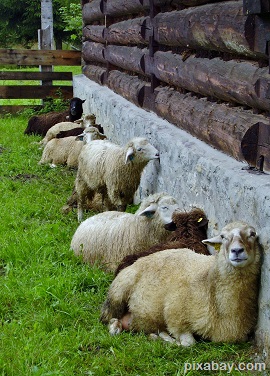
Make sure shelters are well-ventilated to protect animals from heat
If you keep your animals in a barn, make sure that there is plenty of ventilation. Keep the doors at either end of the barn open and keep the outside half-doors to the stalls open so that air can get through. Many people choose to let their animals out at night so that they may take advantage of the cooler air but if you worry about thieves in a survival situation, that may not be a good idea.
Electrolytes
Just like with people, animals need salt and other minerals in addition to water in order to stay hydrated and to keep their bodies functioning optimally. You can buy salt blocks, which are white, and mineral blocks, which are rust-colored, at local feed and hardware stores or you can buy it in powder form at feed stores.
The blocks come in different sizes so that you can put them in the pasture or in each individual feed bucket. Providing them free access to both is the best option because then they can use them as their bodies crave them. The addition of a salt block is necessary so that your livestock can get the salt that they need without the extra minerals. They’ll lick them as they need them so be sure to add these to your farm stockpile.
Sheer sheep and other fuzzy animals in the spring
Though it sounds counter-intuitive, some wool actually helps to keep a sheep and other wool producers cool. This is why most farmers sheer them in the spring. By summer, they have enough wool to keep them cool and by winter, their coats are thick enough to keep them warm.
This applies to dogs that have thick or long coats as well. Shave them in order to help them stay cool but if they’re white or light colored, keep them out of the sun and leave a bit of hair on them to protect their skin from sunburn.
Make a mud hole for your pigs
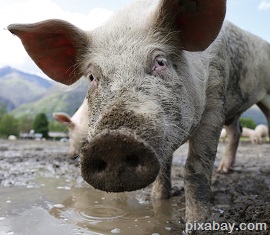
In order to keep your pigs from overheating in the summertime, make sure that they have plenty of shade and a nice cool mud hole to “waller” in. This may seem like a waste of water, but if you want your pigs to survive long enough to turn them into bacon, you need to do it.
How to keep your chickens cool
Just like dogs and cats, chickens pant to cool themselves. They also squat close to the ground and spread their wings in an attempt to dissipate body heat. Provide them with plenty of cold water. Some people do this by adding ice to the water or putting a bottle or gallon jug of frozen water in the water bucket.
Another good idea is the feed them your watermelon rinds because watermelon is mostly water. You can also add frozen fruits and veggies to their water to keep it cool – plus they love pecking at them in the water.
Like other livestock, chickens need electrolytes in addition to water in order to keep everything balanced. You can either add Gatorade or Pedialyte to their water or you can make your own mix of ½ teaspoon salt substitute 1 teaspoon baking soda 1 teaspoon table salt 1 tablespoon sugar to 1 gallon of water. This mix doesn’t need to be given to chickens that aren’t showing signs of heat stress though it can’t hurt to add it in there once a week or so.
Signs of heat stress include panting, spreading wings, lowered egg production, reduced egg size, weight or shell quality, lying down frequently, decreased appetite, weight loss and increased cannibalism.
Keep them off hot surfaces
This may sound like a no-brainer but asphalt, concrete, sand and even wood gets extremely hot and can burn your pet’s paws and body. Don’t let them lie on the surface because it can quickly raise their body temperature and put them at risk for heat stroke.
If your dog begins to show signs of heat stroke such as rapid panting, thick sticky saliva, a bright red tongue, dizziness, weakness, vomiting and extra red or pale gums. Bathe him with room temperature water and allow him to dry naturally while keeping him out of the heat.
Summer heat is just as dangerous to our pets and livestock as it is to us and many of the same common sense rules apply. Especially if you’re in a survival situation where losing your animals may mean starving or being stranded, it’s critical to protect your animals from heat.
We hope that these tips have helped and realize that we didn’t get to all of the survival animals that you may have. If you have any suggestions for us or information about how to protect other animals from heat, please tell us about it in the comments section below.
This article has been written by Theresa Crouse for Survivopedia.


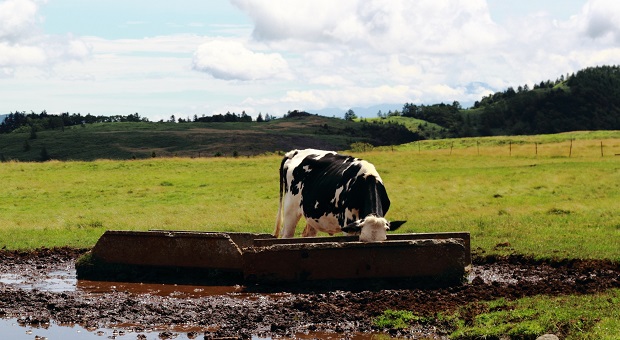

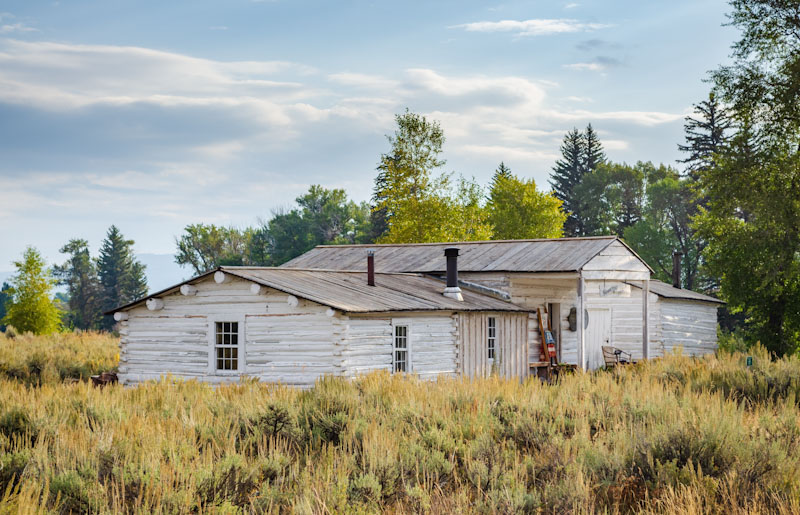
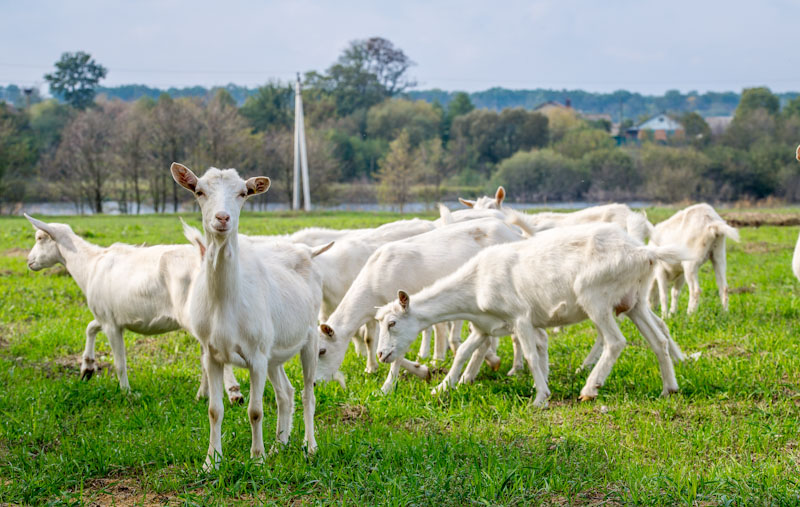
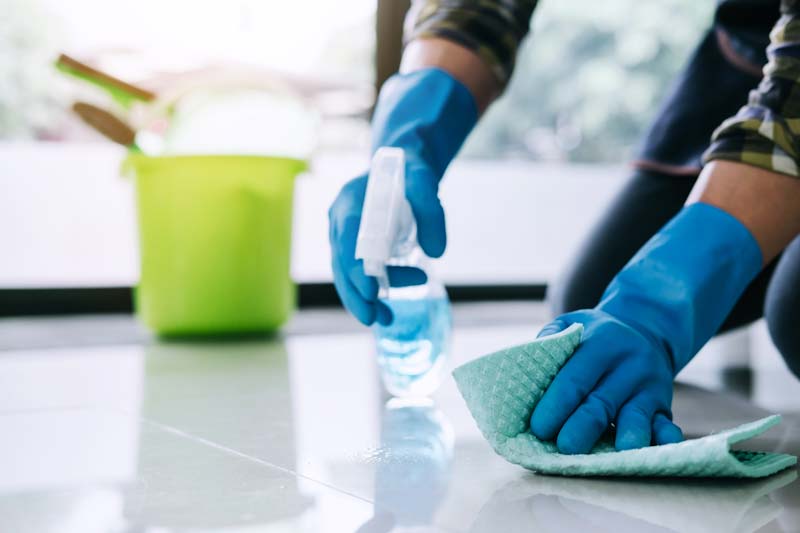
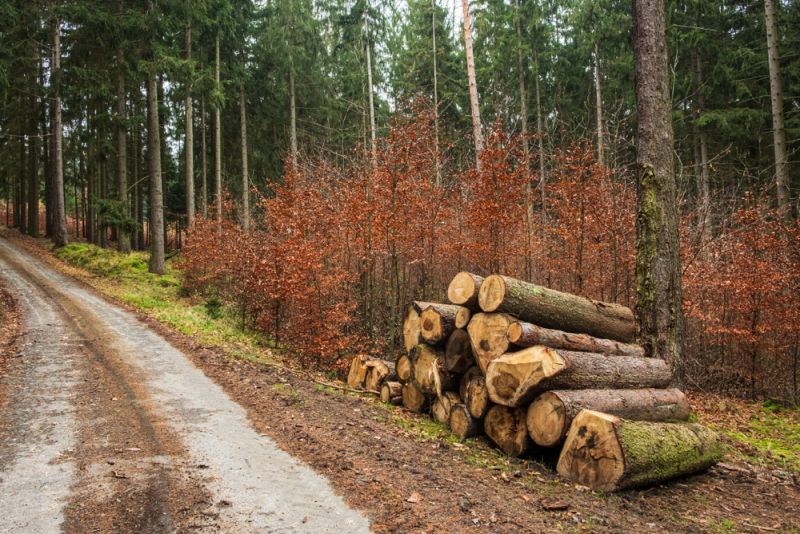

Jo | July 30, 2015
|
Extremely good info on keeping pets and livestock cool in the heat. This is MUST KNOW INFO!
Cherace Hudson | July 30, 2015
|
I use Crystal Blue to keep algae growth to a minimum! It is safe for animals and fish. It comes in a gallon bottle highly concentrated. Buckets only need a drop or two. It turns the water blue and keeps the algae from getting the color rays from the sun that they need to grow. You have to be careful with it as it will stain anything it touches so I always wear rubber gloves when using. It also can’t be stored where it will freeze during the winter, so I keep it in the house.
I also use baby wading pools for the dogs to cool off in. They could be used for any animal that likes getting in water to cool off when a pond is not available. 10 – 20 cc’s of Crystal Blue usually will protect the pools from algae growth, administered anytime you charge the water.
Hope this info can help others!
Rosalie Siri | July 30, 2015
|
I really appreciated this article as I have three grandchildren who are raising animals. Thanks
m | July 31, 2015
|
Had a large rabbitry and lived in Sylmar, CA. When temp got over 100 the misters on the rabbitry roof were not enough to keep them comfortable. So, any rabbit showing distress was dunked all the way to his ears in a 5 gallon bucket of water. Usually only had to do it once. Afterward the rabbit spent the rest of the day cleaning his fur and never became distressed again that day.
Ian | August 18, 2015
|
One animal left out, rabbits. My outside area has fencing attached to posts every 3 feet with cross beams and wire over it so they are safe. In hot weather I throw a sheet over the top. This allows most of the area to be shaded, but allows sun around the sides so they can sit in the sun if they want
jason | September 13, 2015
|
Overall, this is a good article. But, please don’t give your animals Gatorade! That stuff is good neither for humans nor animals. It should only be used by people who are engaged in extreme athletic or combat training, and even they should find a less harmful way to replenish electrolytes.
Pingback:12 Must Know Before Expanding Your Livestock | | disasterdefense.us | February 27, 2016
|
Pingback:12 Must Know Before Expanding Your Livestock | NewZSentinel | February 28, 2016
|
Pingback:12 Must Know Before Expanding Your Livestock | Survivopedia | January 8, 2018
|